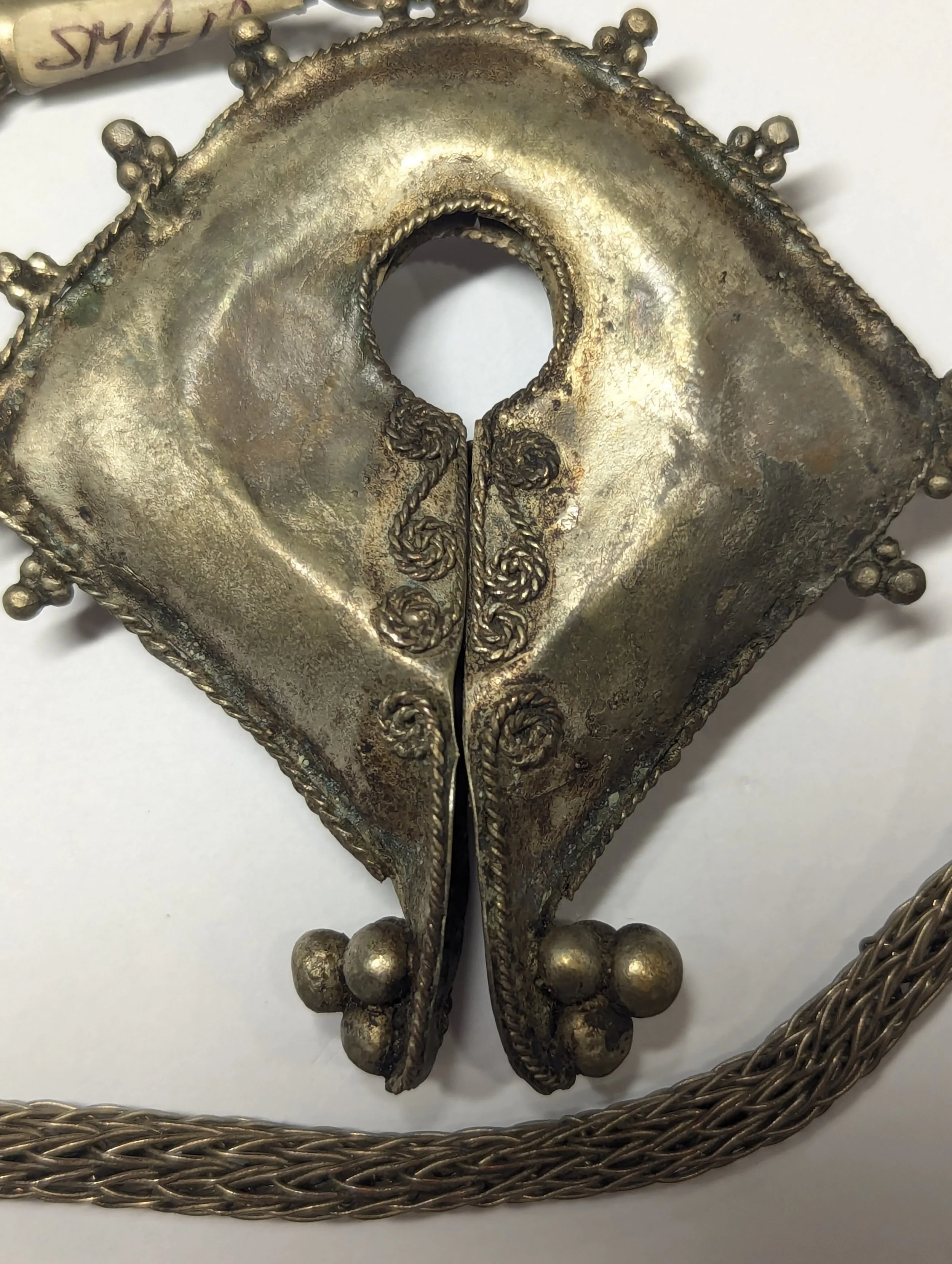Antique Sumbanese Mamuli Necklace - Ceremonial Fertility Pendant, Tribal Silver - Japanese coll.
Antique Sumbanese Mamuli Necklace - Ceremonial Fertility Pendant, Tribal Silver - Japanese coll.
MEASUREMENTS:
Necklace: (diameter) 29,9 // 76 cm
Mamuli cm 7 x 6.5 x 1.8 // 2.75" x 2.5" x 0.7"
This necklace features a Mamuli pendant, a traditional Sumbanese ornament made from metal, often silver or gold. The Mamuli's shape is distinct, symbolizing female fertility and the giver of life. There are still 2 old tags from the previous owner
Such pieces are rare and highly regarded not just for their artistic craftsmanship but also for their symbolic and spiritual significance.
PROVENANCE:
This Mamuli pendant comes from the collection of Mitsuharu-san, a Japanese manager who traveled extensively across Indonesia from the 1970s until his passing in 2022. Hailing from Hokkaido, Mitsuharu-san played a significant role in the development of the Japanese food chain "Hok-Ben" (Hokka-Hokka Bento), which grew to over 140 locations across Java and Bali. Mitsuharu-san’s frequent travels across Indonesia, particularly to the smaller Sunda Islands—such as Lombok, Flores, Sumba, Timor, and Sulawesi—ignited his passion for Indonesian tribal art. Over the years, he curated a remarkable collection of ethnic jewelry from East Indonesia, of which I have had the honor of acquiring select pieces that I now proudly offer here on eBay.
REFERENCES: In terms of references, you can find similar items at institutions like the Metropolitan Museum of Art in New York, the Dallas Museum of Art, and the Musée du Quai Branly in Paris, where these Sumbanese artifacts are displayed as part of their Southeast Asian collections.
Mamuli are ornate metal ornaments crafted by the Sumba people of Sumba, Indonesia. These pieces are particularly important in the megalithic societies of western Sumba, such as the Anakalang society. The distinctive shape of Mamuli symbolizes the female genitalia, representing fertility and the role of women as life-givers. Mamuli are highly valued as heirloom pieces, playing a significant role in ritualistic exchanges during important ceremonies. Mamuli can either be simple (lobu) or decorated (karagat). The lobu mamuli typically have a diamond-shaped body with a concave center, featuring a round hole and vertical slit symbolizing female sexuality and reproductive power. In contrast, the more ornate karagat mamuli, also referred to as ma pawisi ("those with feet"), have additional finials at the base of the diamond shape, often giving them an omega-like appearance. These finials are typically adorned with figures such as roosters, cockatoos, horsemen, buffalo, goats, skull trees, or warriors, representing male power and greatness. Hence, the karagat mamuli are viewed as masculine, while the lobu mamuli are considered feminine. During the colonial period, more elaborate, Baroque-inspired Mamuli were created, featuring complex battle scenes and sometimes movable parts.






